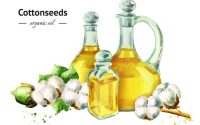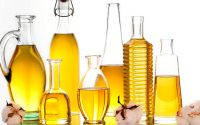Properties and economic benefits of Cottonseed Kernel
Delinted Cottonseed Kernel is full of oil and protein. Cottonseed oil and cottonseed cake were obtained by mechanical pressing or solvent extraction.
After cottonseed oil peeling, the oil content of cottonseed is 18%~20%, which is no less than that of soybean.The oil content of Cottonseed Kernel after shelling is as high as 35%, which is comparable to that of peanut and rapeseed.Cottonseed oil is composed of fatty acids and glycerides.In fatty acids, unsaturated fatty acids account for more than 70%. This fatty acid can not be synthesized in human body. Only from food intake, it is also known as essential fatty acids. Linoleic acid accounts for 55%~60% of unsaturated fatty acids, and it is an important nutrient for human body to synthesize phospholipids, cholesterol lipids, cell membranes and prostaglandins. It also can reduce blood cholesterol and prevent coronary atherosclerosis. Therefore, cottonseed oil is a high quality edible oil in commonly used edible oils and fats.
The linoleic acid content in cottonseed oil is as high as 55.6%, while lard content is only 8.3%, less than 1/6 of cottonseed oil. The linoleic acid content of traditional rapeseed oil is 14.2%, far less than that of cottonseed oil. Even soybean oil, which has long been renowned for its health care, its linoleic acid content is 6.1% lower than that of cottonseed oil. Cottonseed oil is also rich in vitamin E. According to the analysis of Tianjin Institute of Light Industry, the content of vitamin E in cottonseed oil is 600-900 ug/g, peanut oil is 260-360 ug/g, sesame oil is below 300 ug/g, lard and butter are 12-13 ug/g. In the past, cottonseed oil was pressed by hot pressing, the yield of oil was only about 30%, the residual oil content in cottonseed cake was high, and the loss of oil was about 15% ~ 20%. The oil extracted from the oil press is called wool cotton oil. It is black and smelly because it contains more free fatty acids, gossypol, phospholipids, proteins and pigments. After refining oil is edible, its refining process has the following kinds.
(1) After the crude oil is filtered in the ordinary oil refining process, the acid value is detected so as to determine the amount of alkali added and the concentration of alkali solution allocated. Then the oil was preheated to 30 C, heated with 0.5 times the gum content in the crude oil, stirred for 10 minutes and then neutralized with alkali solution (the concentration of the alkali solution should be controlled to 11.107% ~ 17.629%). The operating temperature was 25 ~ 30 the final temperature was 45 ~ 60 and the soap foot was deposited for 5 ~ 6 hours. The oil is then collected and heated to 85, washed with water. The amount of soft water added is 10% ~ 20% of the oil weight (twice), and the dehydration is maintained at 100 ~ 105. Semi clean oil and water should be cleaned two times.
In the operation of high cooking oil refining process, the impurity content of crude oil should be less than 2%, the temperature of alkaline refining is 50-55, the final temperature is 60-65, the concentration of NaOH is 8.208%-9.66%, and the super-alkaline content is 0.05%-0.25% of the oil weight. When water was washed, it remained at about 85 degrees, adding water to 10%~15% of oil weight. Dehydration is not less than 90 C, vacuum residual pressure is not less than 6666Pa. At decolorization time, the vacuum residual pressure is less than 2666~6666Pa at 105 C, and the whole decolorization operation is about 20min. The addition of active clay is 2.5%~5.0% of the oil weight. The oil temperature of the filter clay is not more than 70%, the deodorized oil temperature is about 180%, and the vacuum residual pressure is 666.6~1333 Pa. The whole process of deodorization was about 5~7h, and the amount of citric acid was 0.02%~0.04%. Deodorizing temperature should be controlled at about 250 C, 2~3h. Deodorizing pot should be made of stainless steel.
The process of bleaching oil refining is simple and easy to operate with higher cooking oil refining. The main process is to analyze the acid value of crude oil so as to determine the amount of alkali to be used. The amount of NaOH is equal to the weight of crude oil (g)*acid value x x 0.713 x 1.4 x 10-3 (g). When the crude oil is heated to about 80 C, 10% alkali solution is added at a proper speed while stirring. After stirring for 1 ~ 3 minutes, 1/3 of the crude oil weight is added to warm water (80 ~ 90 C), and the crude oil and water are separated after standing for 8 hours. The oil temperature should be kept at 90 C and washed with hot water for 4~5 times. The water consumption is 1/3 per hour. Dehydration should be maintained at about 110 C until no water vapor comes out, the oil temperature will be reduced to 100 C, and then add 3% ~ 5% of the crude oil activated white clay, stirring for 20 minutes, using a frame plate filter press filtration, that is, double bleaching essential oil. refined cottonseed oil is not only edible, but also an important chemical raw material. After finishing, degumming, deacidification, decolorization, dewaxing and deodorization, cotton oil can be made into white chalk oil, salad oil, solid fat, etc. The refined cotton oil is hydrogenated to form solid hydrogenated cottonseed oil. Low degree of hydrogenation, can be used as margarine, high degree of hydrogenation, used to produce stearic acid, palmitic acid and glycerin, etc., it is the production of soap, skin care grease, candles, lubricants, paints and explosives and other important raw materials.
In addition, when refined cotton oil is refined, its deodorizer residue contains more than 10% vitamin E. Therefore, vitamin E can be prepared from cotton oil by molecular distillation. This product is widely used in medicine, food and feed additives. Linoleic acid can also be extracted from cottonseed oil to make linoleic acid pills, Maitong and other drugs which can treat hypertension. The residue of cottonseed oil after refining is called cottonseed oil residue (or cottonseed oil sludge). It contains 20%~25% free fatty acid, 12% phospholipid, 1%~10% asphalt residue and gossypol. It can also be used as a variety of chemical raw materials. Such as fatty acid asphalt, mold oil, soil surface warming agent, printing ink, casting adhesive, building waterproof materials, fatty acid asphalt glass, etc. Soap feet and acidified crude soap feet can be used as livestock and poultry feed because the gossypol content can be reduced to below 0.02% by heating them in an airtight kettle for 1-3 minutes at 210-220 C. By saponification, acidification, drying, distillation and condensation, the cotton oil foot of Xinxiang County Oil Factory can produce mixed fatty acids, and 2.5 tons of cotton oil foot can be produced every 100 tons of cottonseed oil.



